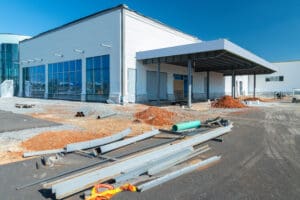When contemplating launching a new commercial business in Southern Oregon, developers should consider many factors, including intricate land use regulations, zoning intricacies, and the nuances of permitting rules. In Oregon, these regulations are typically embedded within comprehensive community plans, carefully crafted through a meticulous process involving data collection, community input, forward-looking projections, and strategic decision-making. Zoning, a critical aspect of this landscape, assigns specific land use designations to distinct parcels, categorizing them as residential, commercial, or exclusive farm use. A profound understanding of the particular zoning districts and overlay districts in the targeted business location is paramount. While every municipality uniquely defines its categories, the types of commercial zoning in Medford, Oregon, illustrate its complexity. For help understanding commercial zoning in your specific area, contact the experts at Richard Stevens & Associates.
 Types of Commercial Zoning in Medford:
Types of Commercial Zoning in Medford:
- Heavy Commercial (C-H). These areas are designated for heavier commercial and service commercial uses. Businesses in C-H zones generally produce more noise, vibration, air pollution, and glare than other types of commercial enterprises or residential homes. One of the restrictions of C-H zoning is that all operations other than those customarily conducted outdoors must be conducted wholly inside an enclosed building. Some examples include dairy products manufacturing and processing, stone cutting and stone products manufacturing, structural metal products fabrication, and gas production and distribution.
- Regional Commercial (C-R). C-R zones include land for the development of commercial uses and services that attract shoppers from the surrounding region and the local community. Regional and local street systems must adequately serve C-R zones to prevent excess traffic from using neighborhood streets. Some examples include motion picture production, distribution, and exhibition; amusement and recreation services; building materials and garden suppliers; and food stores.
- Community Commercial (C-C). C-C zones support the development of commercial facilities that fulfill the community’s shopping needs, primarily community shopping centers. With a few exceptions, commercial buildings in C-C zones cannot exceed 50,000 square feet of gross floor area. In addition to shopping centers, other examples include automotive repair facilities, banking services, insurance agents, hotels and lodging, and dog groomers.
- Neighborhood Commercial (C-N). These zones are intended for the development of small, integrated commercial centers that serve the daily needs of nearby residential neighborhoods. C-N zones are designed to promote pedestrian traffic. The size and character of these zones correspond to and complement surrounding residential areas. Buildings in these zones are limited to a maximum of 2,500 square feet of gross floor area.
- Service Commercial and Professional Office (C-S/P). These areas are reserved for professional offices, hospitals, and limited-service commercial uses. While these businesses draw customers or clients to their locations, retail sales are limited. Because they attract less traffic, they are often adjacent to residential neighborhoods. Some examples include watch repair shops, florists, drug stores, legal services, museums, and real estate offices.
Often, a business may be eligible to locate within multiple types of commercial zoning districts. For example, food stores are allowed in C-H, C-R, C-C, and C-N zones with a few stipulations about maximum size. This is another vital reason to work with a professional land use developer before investing in commercial property.
Richard Stevens & Associates can guide you through the planning stages for locating your next commercial business.
Establishing a new commercial business in Southern Oregon demands a meticulous consideration of complex factors, ranging from intricate land use regulations to zoning intricacies and permitting nuances. The state’s comprehensive community plans, shaped through a careful process, underscore the importance of strategic decision-making based on data collection and community input. Understanding the specific zoning districts and overlay districts in the targeted business location is crucial. The multifaceted nature of commercial zoning in Medford, Oregon, exemplifies this complexity, with designations like Heavy Commercial (C-H), Regional Commercial (C-R), Community Commercial (C-C), Neighborhood Commercial (C-N), and Service Commercial and Professional Office (C-S/P) having distinct characteristics and permitted uses.
For expert guidance in navigating this intricate landscape, we encourage you to seek the professional land use consulting services of Richard Stevens & Associates. Our expertise can assist you in identifying the optimal location for your new commercial venture, ensure compliance with regulations, and maximize your investment’s potential. Don’t navigate this intricate process alone; let our Richard Stevens & Associates professionals be your trusted partners in achieving success. Contact us today for tailored assistance in understanding the commercial zoning intricacies in your specific area.

 Types of Commercial Zoning in Medford:
Types of Commercial Zoning in Medford: